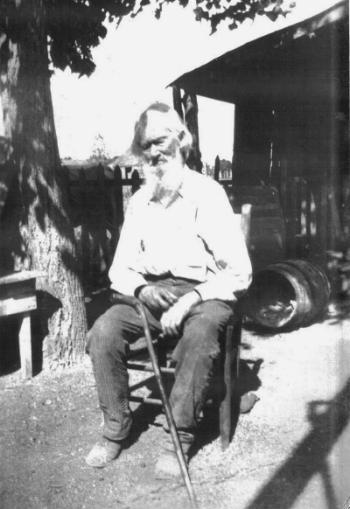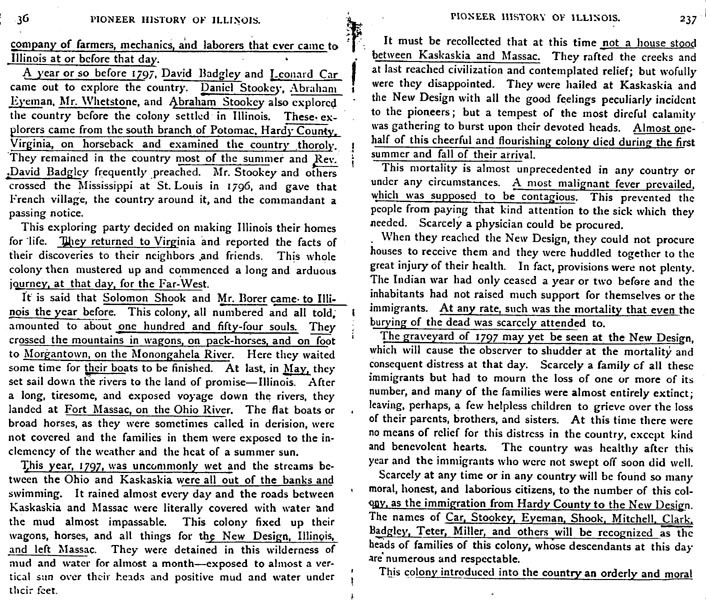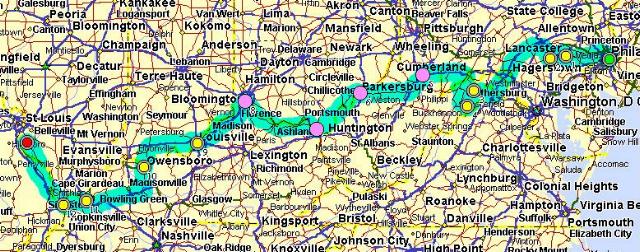JOURNEY
TO PENNSYLVANIA
The journey to Pennsylvania fell
naturally into three parts. The first part, and by no means the
easiest, was the journey down the Rhine to Rotterdam or some
other port. Gottlieb Mittelberger in his Journey to Pennsylvania
in the year 1750, wrote:
"This journey lasts from the
beginning of May to the end of October, fully half a year, amid
such hardships as no one is able to describe adequately with
their misery. The cause is because the Rhine boats from Heilbronn
to Holland have to pass by 26 custom houses, at all of which
the ships are examined, which is done when it suits the convenience
of the custom-house officials. In the meantime, the ships with
the people are detained long, so that the passengers have to
spend much money. The trip down the Rhine lasts therefore four,
five, and even six weeks. When the ships come to Holland, they
are detained there likewise five to six weeks. Because things
are very dear there, the poor people have to spend nearly all
they have during that time."
The second stage of the journey was from Rotterdam to one of
the English ports. Most of the ships called at Cowes, on the
Isle of Wight. This was the favorite stopping place, as 142 ships
are recorded as having sailed from Rotterdam to Cowes. . .
In England there was another delay
of one to two weeks, when the ships were waiting either to be
passed through the custom house or waiting for favorable winds.
When the ships had for the last time weighed their anchors at
Cowes or some other port in England, then, writes Mittelberger,
"the real misery begins with the long voyage. For from there
the ships, unless they have good wind, must often sail eight,
nine, ten to twelve weeks before they reach Philadelphia. But
even with the best wind the voyage lasts seven weeks."
The third stage of the journey,
or the ocean voyage proper, was marked by much suffering and
hardship. The passengers being packed densely, like herrings,
as Mittelberger describes it, without proper food and water,
were soon subject to all sorts of diseases, such as dysentery,
scurvy, typhoid and smallpox. Children were the first to be attacked
and died in large numbers. Mittelberger reports the deaths of
32 children on his ship. Of the heartless cruelty practised he
gives the following example: "One day, just as we had a
heavy gale, a woman in our ship, who was to give birth and could
not under the circumstances of the storm, was pushed through
the porthole and dropped into the sea, because she was far in
the rear of the ship and could not be brought forward."
The terrors of disease, brought
about to a large extent by poor food and lack of good drinking
water, were much aggravated by frequent storms through which
ships and passengers had to pass. "The misery reaches the
climax when a gale rages for two or three nights and days, so
that every one believes that the ship will go to the bottom with
all human beings on board. In such a visitation the people cry
and pray most piteously. When in such a gale the sea rages and
surges, so that the waves rise often like mountains one above
the other, and often tumble over the ship, so that one fears
to go down with the ship; when the ship is constantly tossed
from side to side by the storm and waves, so that no one can
either walk, or sit, or lie, and the closely packed people in
the berths are thereby tumbled over each other, both the sick
and the well ~ it will be readily understood that many of these
people, none of whom had been prepared for hardships, suffer
so terribly from them that they do not survive."
When at last the Delaware River
was reached and the City of Brotherly Love hove in sight, where
all their miseries were to end, another delay occurred. A health
officer visited the ship and, if any persons with infectious
diseases were discovered on the ship, it was ordered to remove
one mile from the city. As early as 1718, Dr. Thomas Graeme was
appointed to visit and report on all incoming vessels. But no
reports from him are on record until the year 1738. On September
14, 1738, Governor George Thomas laid before the Board the reports
of Dr. Graeme, "setting forth the condition of four ships
lately arrived here from Rotterdam and Amsterdam; And it being
observed from one of the said reports that were the Passengers
on Board the ships Nancy and Friendship allowed
to be immediately landed, it might prove dangerous to the health
of the Inhabitants of this Province and City, It is Ordered that
the Masters of said Ships be taken into Custody for their Contempt
of the Governour's Order, signified to them by Thos. Glenworth,
pursuant to a Law of this Province, to remove to the Distance
of one Mile from this City, and that they shall remain in Custody
till they shall give security in the sum of Five Hundred Pounds
each, to obey the said Order, and not to land any of their passengers,
Baggage, or Goods, till the Passengers shall have been viewed
and examined, and untill they shall receive a Licence from the
Governor for so doing."
The Governor urged at this time
that a hospital be erected for sich passengers, but the Assembly
refused to act until an epidemic broke out in the city of Philadelphia.
Then the Assembly voted to buy Fisher Island, at the junction
of the Schuylkill with the Delaware. The Island was bought in
1743 . . . The name of the island was changed to Province Island
. . . the erection of an adequate hospital was, however, delayed
until the year 1750. . .
A vivid account of the arrival
of these passenger ships in the harbor of Philadelphia is given
by the Rev. Henry M. Muehlenberg, in a report which he sent to
Halle . . . "After much delay one ship after another arrives
in the harbor of Philadelphia, when the rough and severe winter
is before the door. One or more merchants receive the lists of
the freights and the agreement which the emigrants have signed
with their own hand in Holland, together with the bills for their
travel down the Rhine and the advances of the 'newlanders' for
provisions, which they received on the ships on account. . .
Then the new arrivals are led in procession to the City Hall
and there they must render the oath of allegiance to the king
of Great Britain. After that they are brought back to the ship.
Then announcements are printed in the newspapers, stating how
many of the new arrivals are to be sold. Those who have money
are released. Whoever has well-to-do friends seeks a loan from
them to pay the passage, but there are only a few who succeed.
The ship becomes a market-place. The buyers make their choice
among the arrivals and bargain with them for a certain number
of years and days. They then take them to the merchant, pay their
passage and their other debts and receive from the government
authorities a written document, which makes the newcomers their
property for a definite period."
Federal immigrant
records were not kept until 1825, although a few counties have
records. He could not have immigrated directly to Illinois, which
had no seaport. However, some Port of Philadelphia ship captains'
passenger lists survive and had to be presented "At the
Court House in Philadelphia." These records show that in
the year 1749 alone, twenty-two sailing ships arrived with almost
30,000 German passengers. "The ratio of passengers to
signers of the lists was approximately 5 to 2," so children
and most women were not listed.
|









